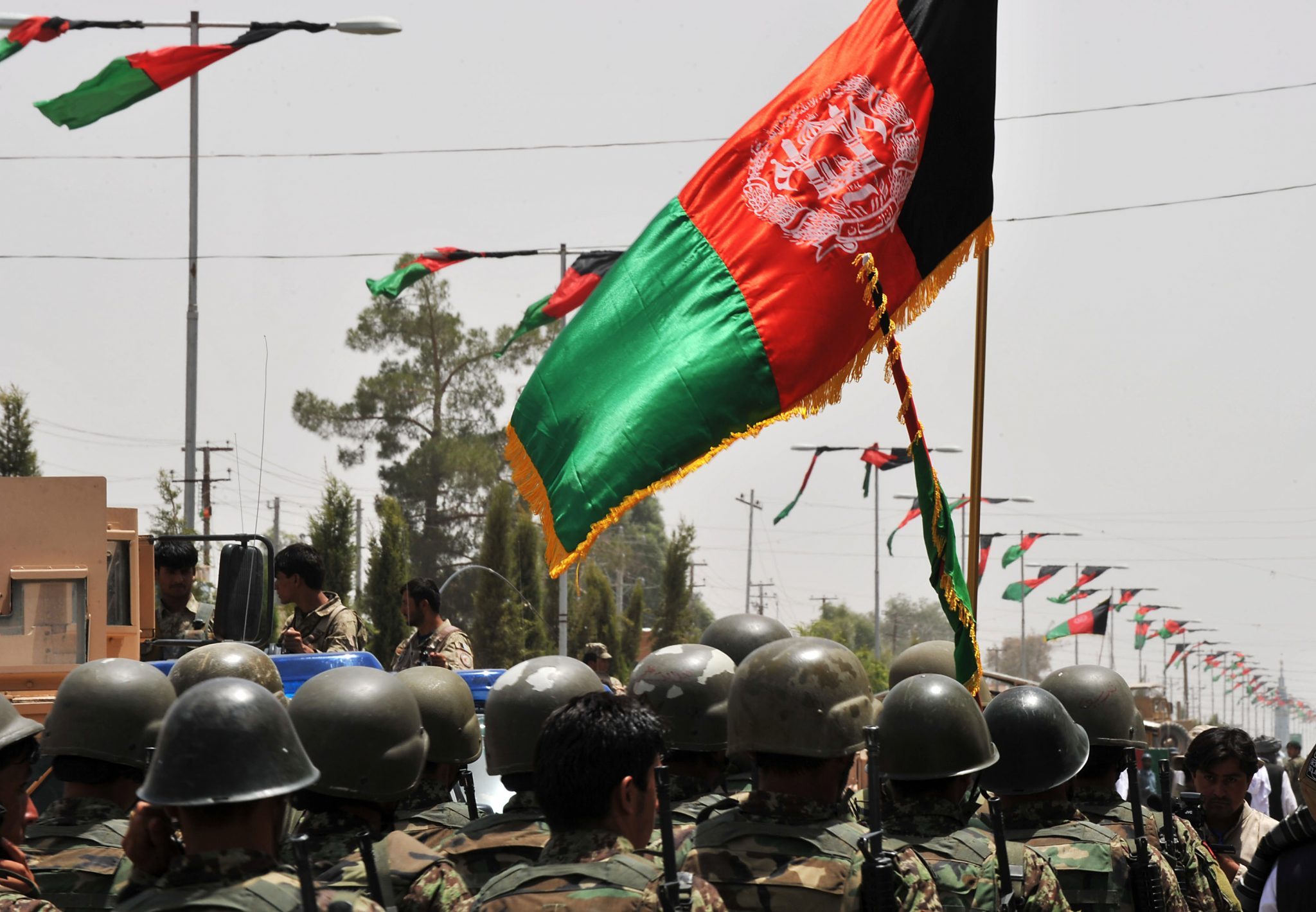In the last 43 years, Afghanistan has faced a series of deadly conflicts.
Facilitated by Qatar since September last year, the intra-Afghan talks have been held in Doha without clear signs of progress emerging from either side. As the conflict unravels into more bloodshed and violence, the death toll for civilian casualties is on the brink of reaching a record high this year.
Last week, Afghan government and Taliban negotiators returned to the Gulf state in what was seen as a sign of hope towards reaching a settlement amid a surge in violence in Afghanistan.
However, the three-day talks adjourned without an agreement on a ceasefire, though reports suggested the Taliban has been offered a power-sharing deal by Afghan government negotiators in Qatar.
By the time the talks ended on Thursday, the Taliban had snatched more territories and provincial capitals – pushing out thousands of Afghans from their homes as the conflict turned into an humanitarian crisis.
“The Taliban generally believe on the battlefield that they have a military victory, they think that the Taliban can win…and they have been able to prove that on the battlefield despite very heavy airstrikes by the Americans,” Afghan journalist, Bilal Sarwary told Doha News.
In February 2020, the Taliban and the US signed a “historic” agreement that stipulated that Washington would withdraw all American and NATO troops by May on the condition that the insurgent group reduces its violence
In turn, the Afghan government would also release hundreds of Taliban prisoners.
However, US President Joe Biden has since changed this deadline, stating all troops would withdraw by 11 September instead, angering the insurgents. Biden’s decision decision has been described as “too sudden” and Washington has faced criticism for not providing a proper peace plan before leaving after two decades in the country.
“I think if you are the Taliban, you have no incentives to negotiate at the moment, because you know the Americans are leaving anyways, you always know about the artificial timelines, and you know there’s political division here,” added Sarwary.
With foreign troop withdrawals now underway, the Taliban has made rapid military advances, taking over 10 provincial capitals in less than a week alone. The group currently has a chokehold on all provinces except the capital Kabul, though recent reports suggest the insurgents have started penetrating the city.
“Afghanistan was left without a credible and meaningful peace process, without a comprehensive and permanent ceasefire,” said the Afghan journalist.
Afghan gov. hands mediator Qatar ‘crisis exit plan’ at Doha talks
However, speaking to Doha News ahead of the talks in Qatar last week, Afghan government negotiator Fatima Gailani seemed hopeful.
“We, the people of Afghanistan, what else can we do but be optimistic and carry on? Just look at the last 43 years, just see that we were harmed by a superpower at the time,” she said, two weeks ahead of talks to de-escalate the violence.
Gailani, the most senior woman negotiator on the Afghan government’s side, has herself witnessed decades of war in her home country.
The official has been at the forefront of politics in Afghanistan since the Soviet war in 1979 and served as the spokesperson for the Afghan Mujahideen, the country’s resistance movement at the time.
The Taliban was formed in the early 1990’s by the Mujahideen, however many would say the insurgent group was different back then.
In a recent statement, Afghan President Ashraf Ghani said the insurgent group has changed in comparison to the past 20 years, becoming more “cruel”.
“We have to remember the dynamics were very different. In the 1990’s the various Mujahideen factions were fighting against each other because they could not agree on power sharing. There were four or five governments, and the country had four different currencies,” said Sarwary.
While Sarwary said he also sees hope in the country, he admits a lot of work is required in order to achieve peace.
UN warns Afghanistan heading towards ‘highest’ annual civilian casualties since 2009
“The Afghan people are saying enough is enough and if we don’t have a permanent and comprehensive ceasefire now, I’m afraid in a year’s time Afghanistan will be further destroyed, not only in infrastructure and loss of life, but we will have nothing called a country,” he said.
The Afghan journalist noted a generational shift in the Taliban has played a major role in how the group has changed over the years, with younger fighters now appearing to be heavily influenced by Al-Qaeda “in terms of the thinking and the fighting skills they have”.
Despite this, both Gailani and Sarwary believe it would be hard to imagine an Afghanistan without the Taliban due to its deeply entrenched, years-long presence.
“I don’t think there can be an Afghanistan without anyone. I think this is one of the biggest mistakes of the last 40 years…they need to fight their differences not on the battlefield, not with tanks, not with artillery, not with bullets but with ballots,” said Sarwary.
‘A country of graves’
In the last few weeks, the humanitarian situation has extensively and rapidly worsened with rights groups warning of more displacements and civilian casualties.
“If you go to any province, whether you go to a village that belongs to the government, civilians or the Taliban, all you see are graves, and graves, and graves—so this is becoming a country of graveyards,” he said.
A recent report by the UN’s Assistance Mission to Afghanistan [UNAMA] said up to 2,400 Afghan civilians were killed or injured in May and June alone, the highest number for those two months since it started recording data in the country in 2009.
In the report, UNAMA said that it recorded a total of 5,183 civilian casualties between January and June, including 1,659 deaths – a 47% increase in comparison to the same period last year. Out of those numbers, 14% were women and 32% were children.
Both numbers make up almost half of the recorded casualties since the beginning of this year. However, the report highlighted 2,392 civilian casualties in May and June alone, with 783 killed and 1,609 injured.
“I think the country is bleeding. Kabul is the broken heart and soul of a country that is actually struggling…we can have peace for girls and boys that will be the next generation like my daughter. I want to see her go to school here, I want to see her grow up here,” said Sarwary.
Sarwary himself is a new father to a one month-old daughter named “Sola”, which translates to “peace” in Pashto.
“We named her Sola which means ‘peace’ in our language with a lot of hopes, but it’s not happening and it’s slightly disappointing in a sense,” he said.
When asked about the numbers in the UN’s report, Gailani said figures are of concern and believes it is a wake up call for those involved on the negotiating sides.
“I agree with the United Nations…if the outsiders are feeling sorry for us, isn’t it the time that we take some of this responsibility and just do it ourselves, go towards peace, negotiation and a common country for all of us?” she said.
For years, officials involved in the Afghan peace process and diplomats across the world have stressed the importance of reaching a political settlement as the war cannot be resolved through military means.
As a direct witness to decades of war and after experiencing the consequences as the president of the Afghan Red Crescent Society for some 12 years, Gailani also believes that a military solution is nonviable.
Afghanistan invasion architect George Bush ‘concerned’ for women following troop withdrawal
“We are still paying for it [Afghan war] for God’s sake, we never saw the face of peace for many, many years. So why would we want to repeat the same thing?” she said.
Since the beginning of the troop withdrawal in May, the United Nations Office for the Coordination of Humanitarian Affairs [OCHA] said there are at least 244,000 internally displaced people [IDPs] in Afghanistan—a 300% increase in comparison with the same period last year.
“Now you have close to one million Afghans who have been displaced, a farmer has lost his harvest, a businessman has lost millions of dollars, so this war has deadly consequences for everyone and anyone here in the country,” said Sarwary.
Factors needed to achieve peace
With a stalled peace process, floating statements, and an alarming rise in violence, the Afghan negotiator said there are several factors that can lead to peace in Afghanistan.
“This is not just a national war. It is not even a regional war. It is an international problem and we have to deal with it that way. This is the way that we can come to peace and stability.. Otherwise, this fire will go to our neighbours,” she said, noting that recognising the crisis as a global issue rather than domestic is key in reaching a resolution.
Gailani said a second factor lies on the Afghan side, noting the government needs to acknowledge its responsibility in ending the war.
Meanwhile, Sarwary said a failure to unite on the Afghan government’s front has aided in stalling the peace process, though a list of options are available.
“Credible, international intervention with sticks and carrots, with sanctions, with conditions that will create a meaningful and credible peace process, one that has nothing to do with artificial deadlines,” said the Afghan journalist.
“The people of Afghanistan can quite simply not afford to continue receiving this many coffins. It is literally breaking the backbone of Afghan society”.
Follow Doha News on Twitter, Instagram, Facebook and Youtube







